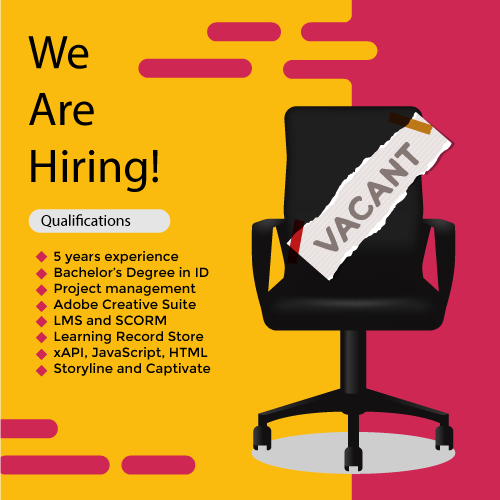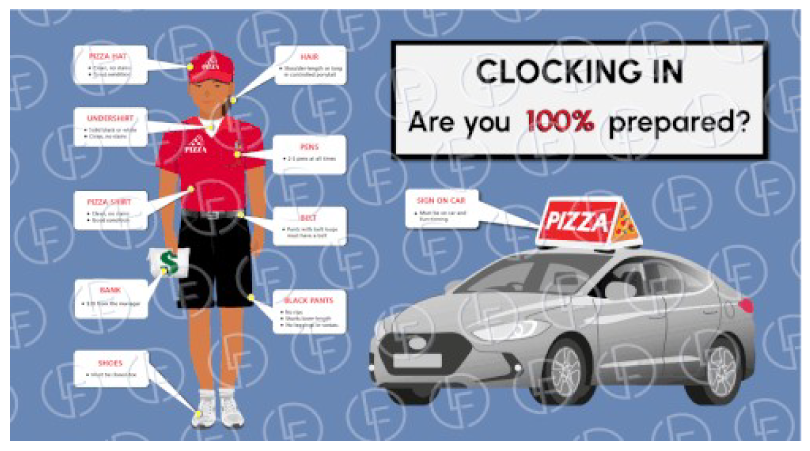EXPERIENCE NEEDED
You will be hard-pressed to find job postings for any role that pays equivalent to your teaching salary with “no experience necessary.” At best you will find 1-3 years of experience are required for jobs at the lower end of the average pay scale for your career of choice. Most roles I applied for listed 3 - 5 years of corporate experience necessary. So how does anyone get started in the first place?
Requirements or Wishlist
Most job descriptions include a list of very specific requirements as well as a list of preferred skills. A 2019 study by Robert Half revealed that “84 percent of companies are willing to hire and train a candidate who lacks required skills.” That being said, if you read through the job description and feel like you would be in over your head, then it’s probably not worth applying. In my job search, I found that Senior Instructional Designer positions included overseeing other instructional designers, so I eliminated any posting with “senior” in the job title. Most of the jobs included a requirement similar to this:
- 3+ years of experience working as an instructional designer in a corporate environment
I had 15+ years of experience as an “instructional designer” in the classroom and plenty of experience as an instructional designer for district-wide teacher professional development. On my resume and in my interview responses, I treated my professional development experience as my corporate experience. (I’ll get into more detail on how I did this in my future post on interviews.)
Don’t Panic
When I started out on this journey, just thinking about pulling this off brought out the Imposter Syndrome tenfold. I had no idea how I would be able to talk about my experience in corporate terms with any confidence. Be patient with yourself. We all want to get from point A to point B ASAP, but that’s not realistic - especially if your desired role requires some upskilling. If you immerse yourself in the resources I’ve mentioned (podcasts, articles, courses, and tutorials) the vocabulary will become more natural over time and you will gain the necessary confidence in your skills.
Volunteer
This section is specifically for those who are transitioning to instructional design, but you may be able to apply these principles to other career choices. A common recommendation for aspiring instructional designers is to gain experience by volunteering your services. I found the idea intimidating, imagining myself going door-to-door and hoping some business owner just happened to be waiting for an ID to show up and solve their training needs. However, with a little creativity, this doesn’t have to be so daunting. First of all, wait until you are just about finished with your upskilling. In my case, I did it as I became close to completing the bootcamp and my portfolio. Start with where you are most comfortable. School. Volunteer to create a tutorial for staff - how to use a feature of an application used by teachers, a scenario-based experience for parents to discover the value of engaging with your district’s online grading platform, or an onboarding solution for new hires. These are common needs for businesses - software simulations, engaging customers, and onboarding new hires. Try to stay away from topics that focus on classroom experience such as classroom management or differentiation for students. If you can apply the differentiation skills to meet the varying needs of teachers (adults) in a PD, that is much more relatable for hiring managers. Potential employers will obviously know from your resume that you are in fact a teacher and much of your experience is focused on children, but you want to avoid reminding them of that whenever possible. Another option is to reach out to friends or family members who run a business or organization. This doesn’t need to be anything large-scale or official. Start with the hypothetical. It is easier to hit up family or friends because they may be more willing to play along. Ask questions like “What is something you wish employees were better at?” or “How are new employees trained now?” Just get the wheels turning to find an area where some form of learning solution could help.
My Own Volunteer Experience
As it so happened, my son had recently been promoted to General Manager of a popular pizza franchise. I treated him to dinner and picked his brain about the issues that may be affecting the success of this new store. He mentioned a shift manager who lacked effective communication skills and the patience needed to empower his staff and promote a positive environment. My son talked about needing a way to give all employees a sense of ownership in the success of the store and trying to get employee buy-in to new processes he designed to streamline the workflow in the kitchen. He was also frustrated with delivery drivers arriving to work unprepared. They would clock in and then waste company time looking for parts of their uniform or head out with their first delivery and then realize they still needed to install the car-top sign. He also mentioned employees needing help dealing with difficult customers on the phone, in-store, and upon delivery.
The simplest solution I envisioned was a job aid (poster) to hang by the time clock clearly identifying what was required to be in place before delivery drivers were allowed to clock in. He loved the idea and took it back to the owner for approval. Being that this was a franchise of a national corporation, he had permission to display the poster as long as it wasn’t visible to the public. This was one of 5 stores owned by this particular franchisee, and he was excited about the idea for all of his stores. I designed a prototype of the poster and sent it to my son and the owner for feedback. After implementing the feedback, I created a final draft of the poster and sent it over for approval. It was a big hit.
My son probably wouldn’t be able to officially deploy any of the other training solutions I proposed because of corporate regulations, but he was happy to go through the design and development process with me and test them out with his employees so I could evaluate their effectiveness. So that is exactly what I did. I followed the ADDIE model starting with an analysis of the workflow, learning gaps, the needs of the learners, and the desired end goal for the store. I proposed two more learning solutions and created prototypes. My plan was to continue developing these projects while I applied for jobs.
I had no idea I would interview and land a role so quickly! If you would like to see how this experience looked to potential employers on my portfolio, go to the Portfolio page of this website and scroll down to “Current Works in Progress.”



